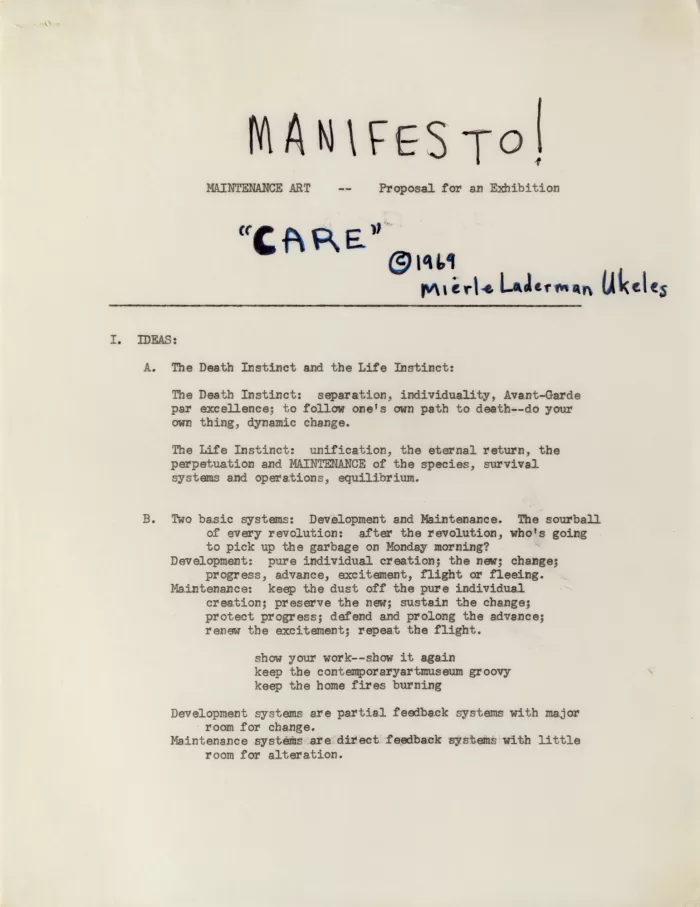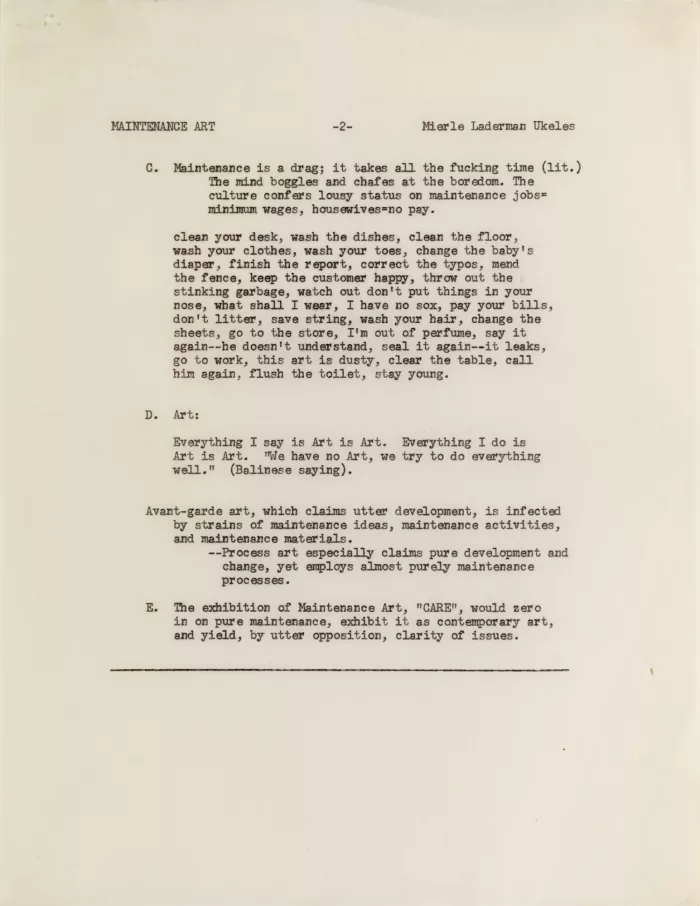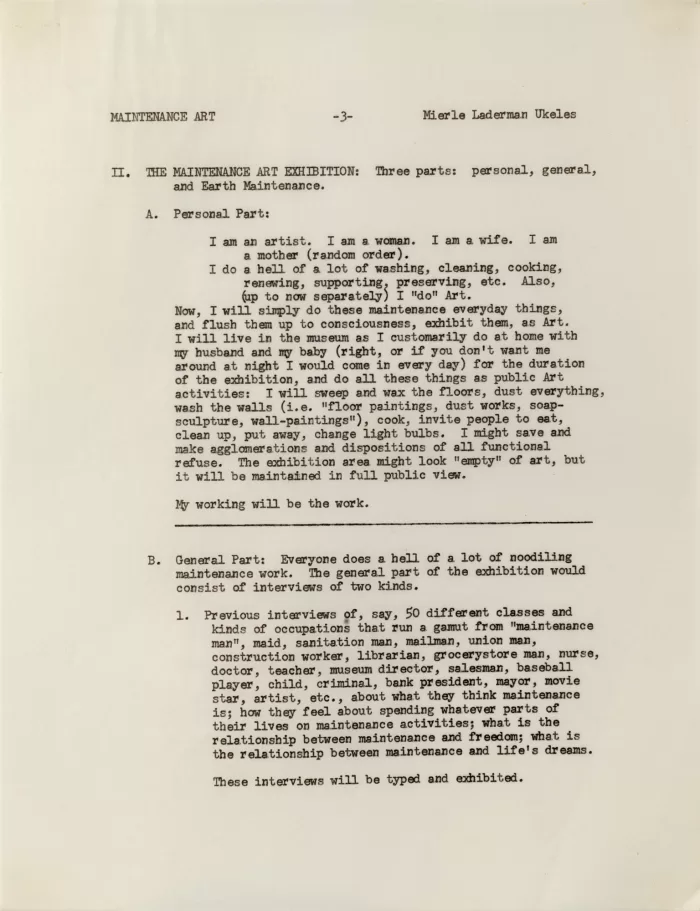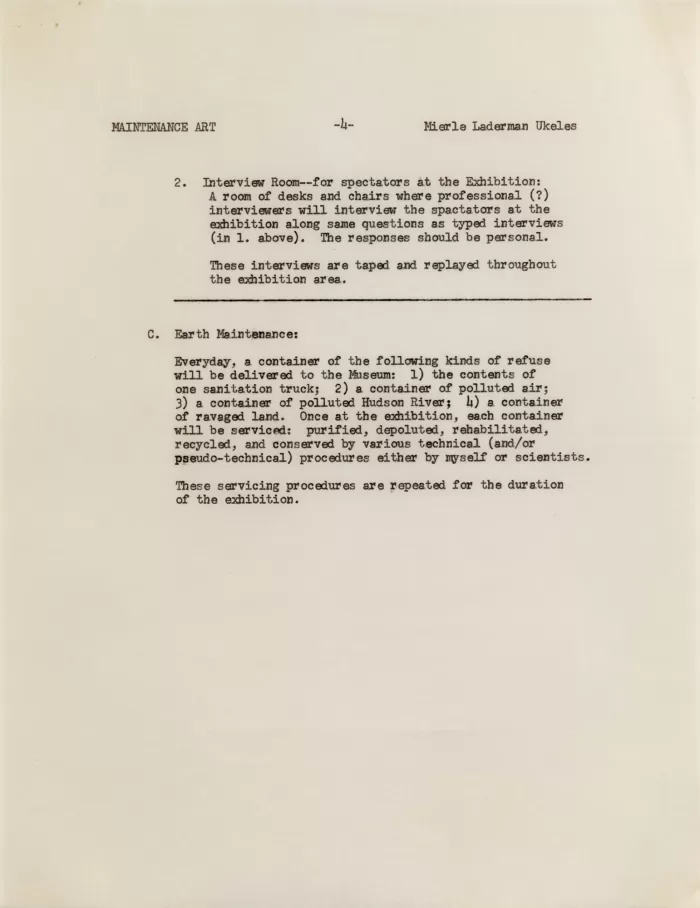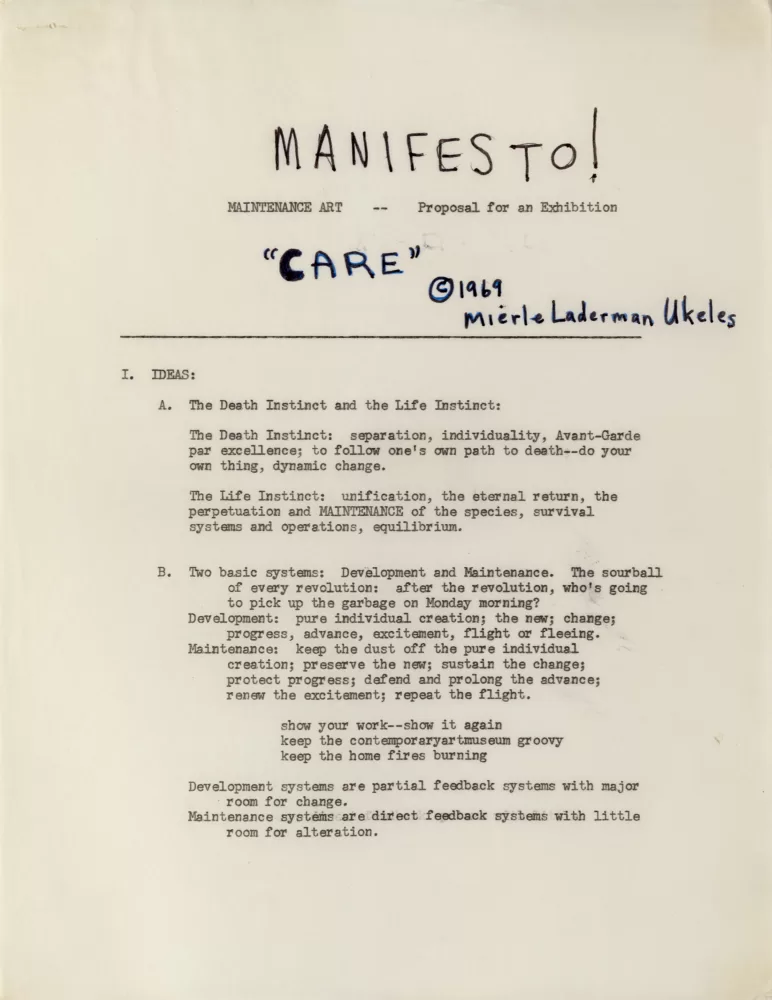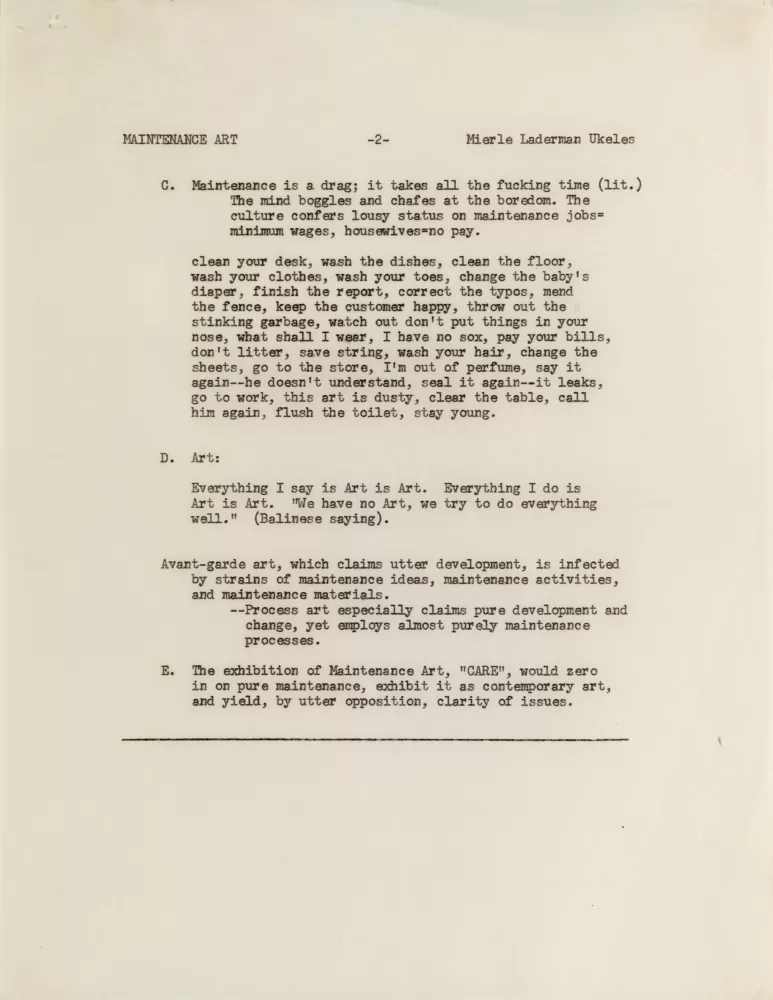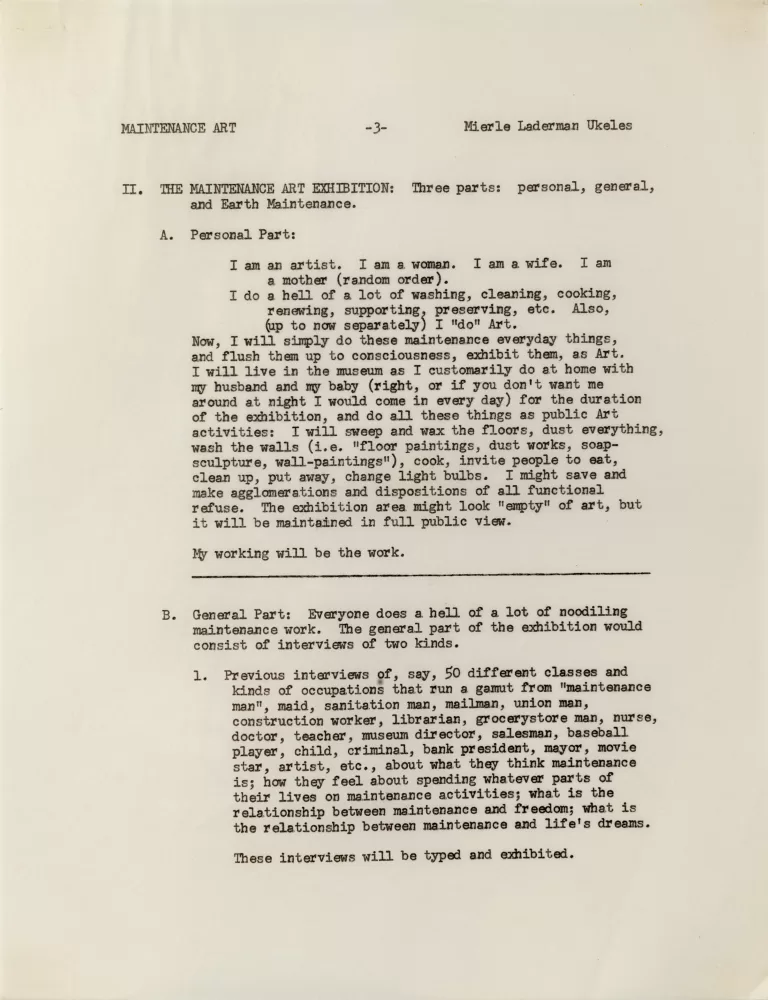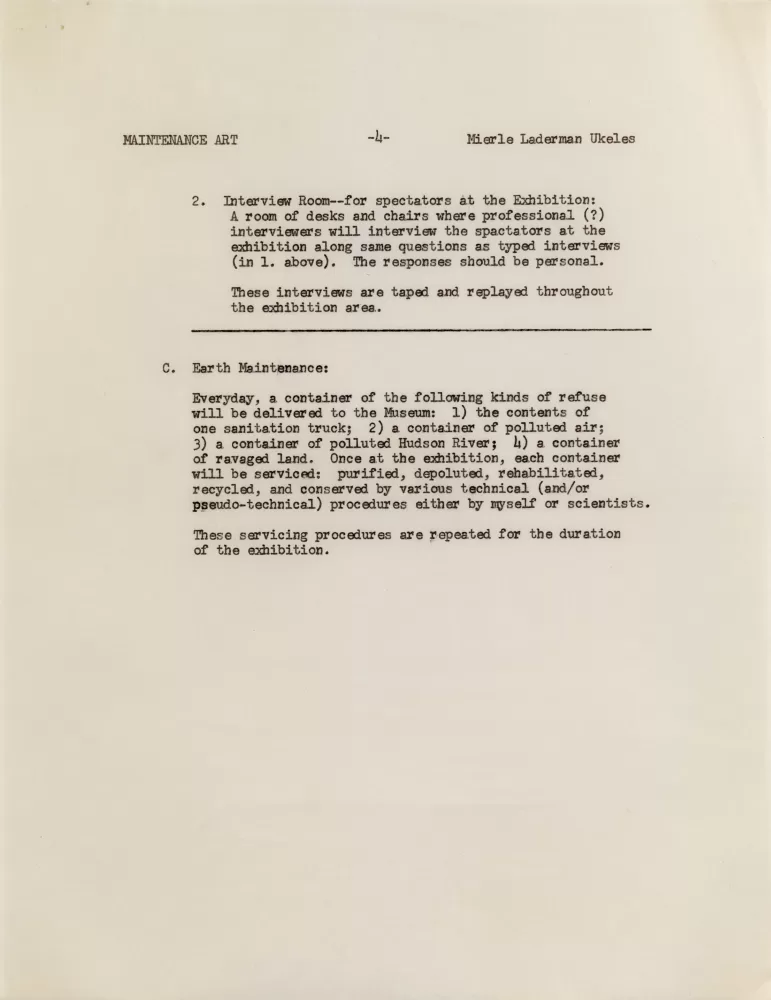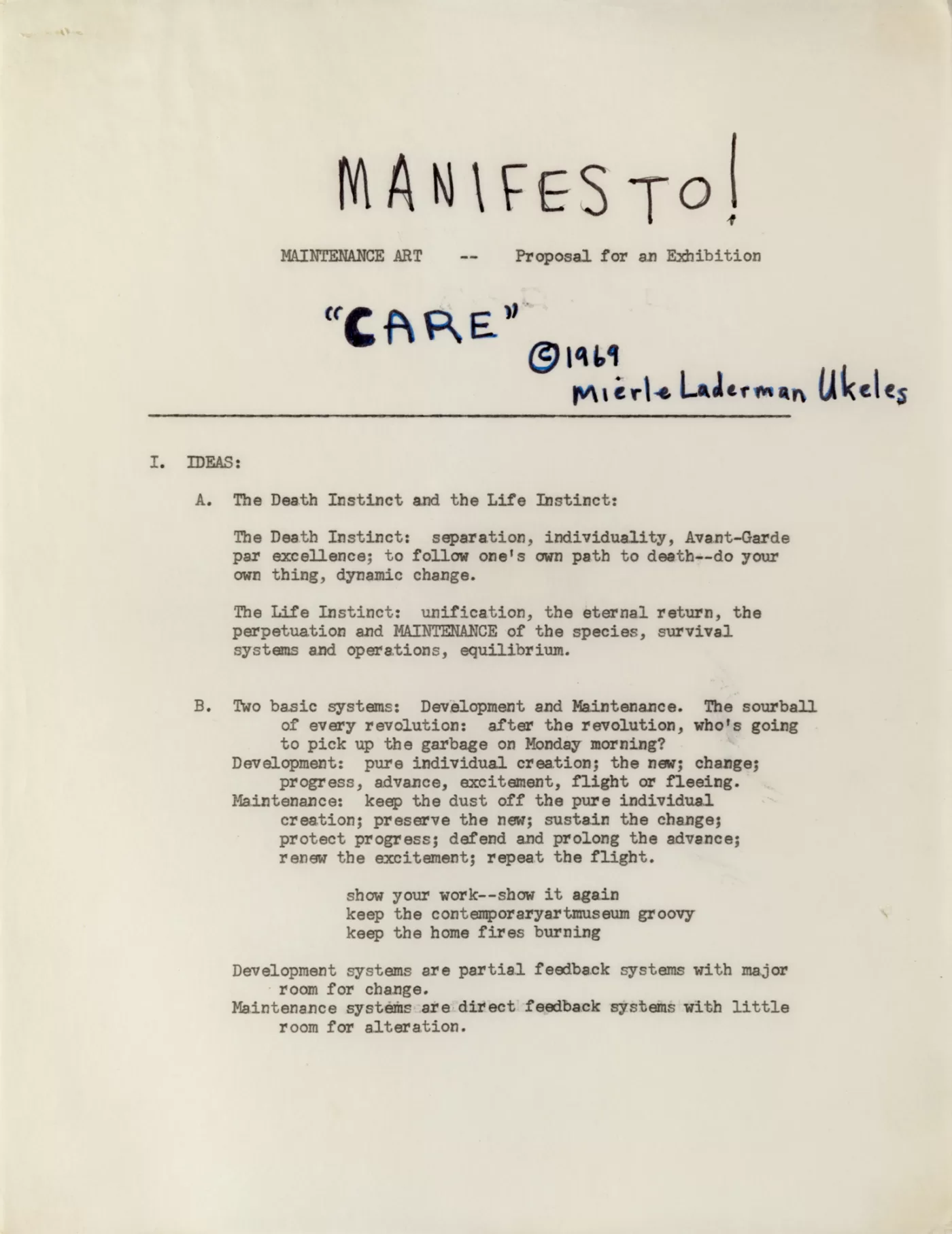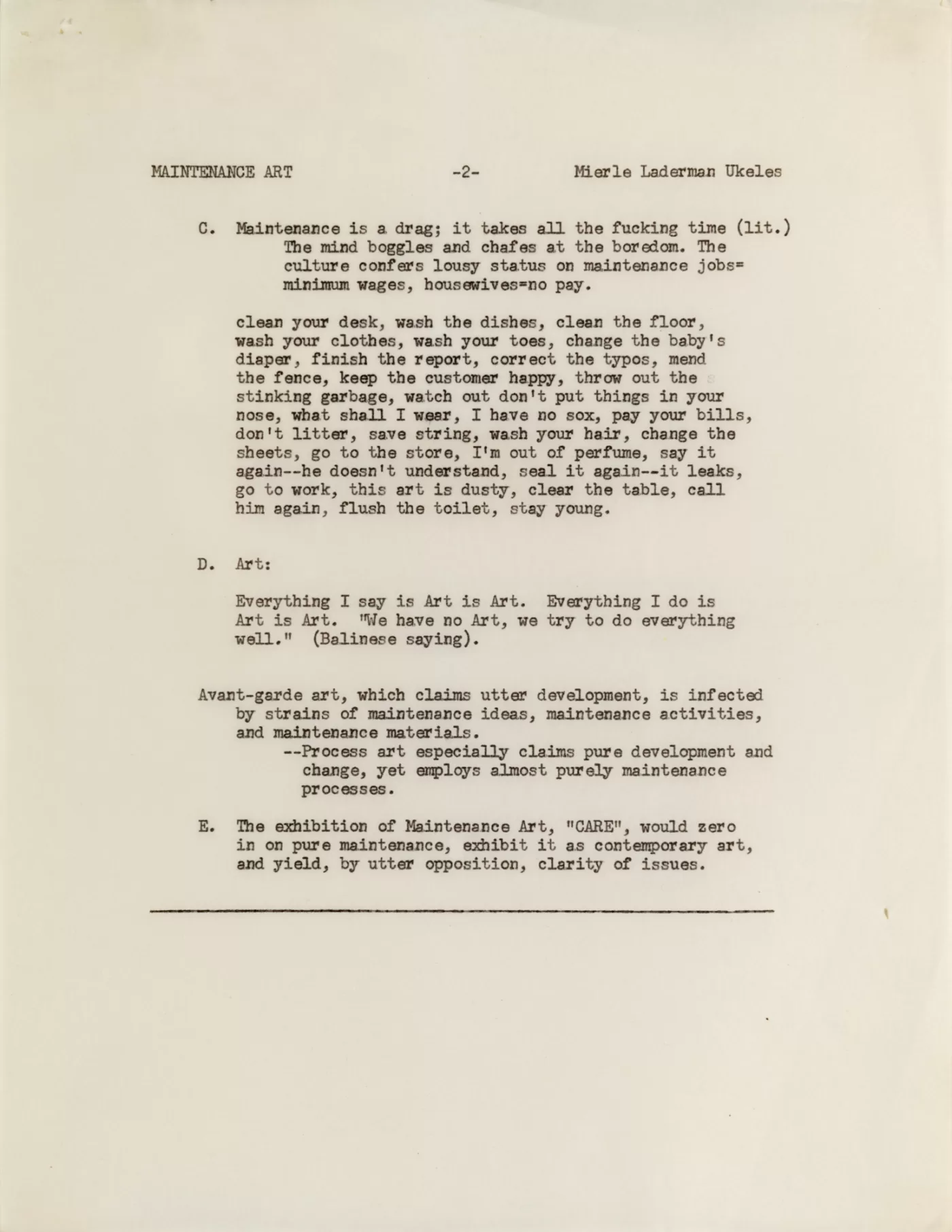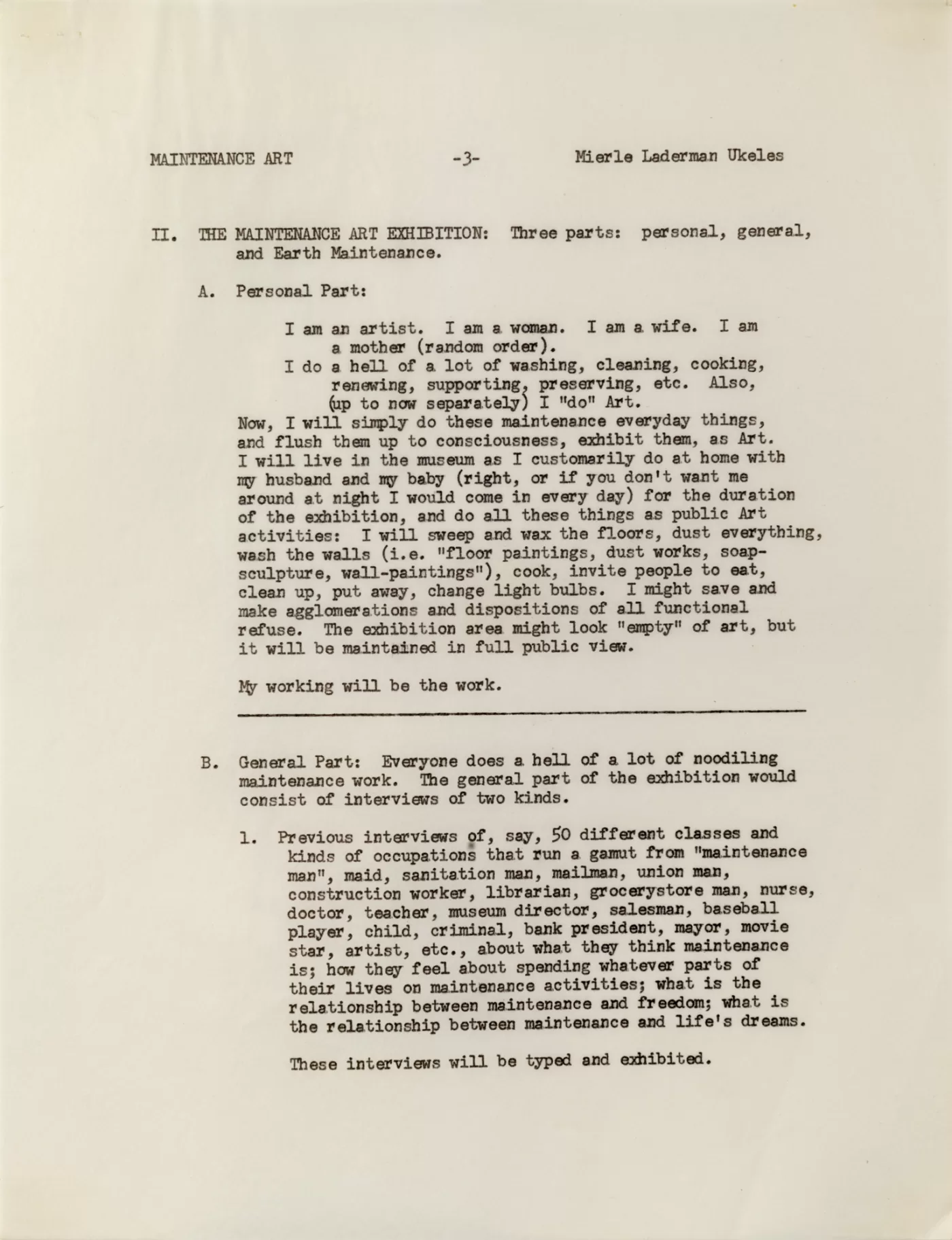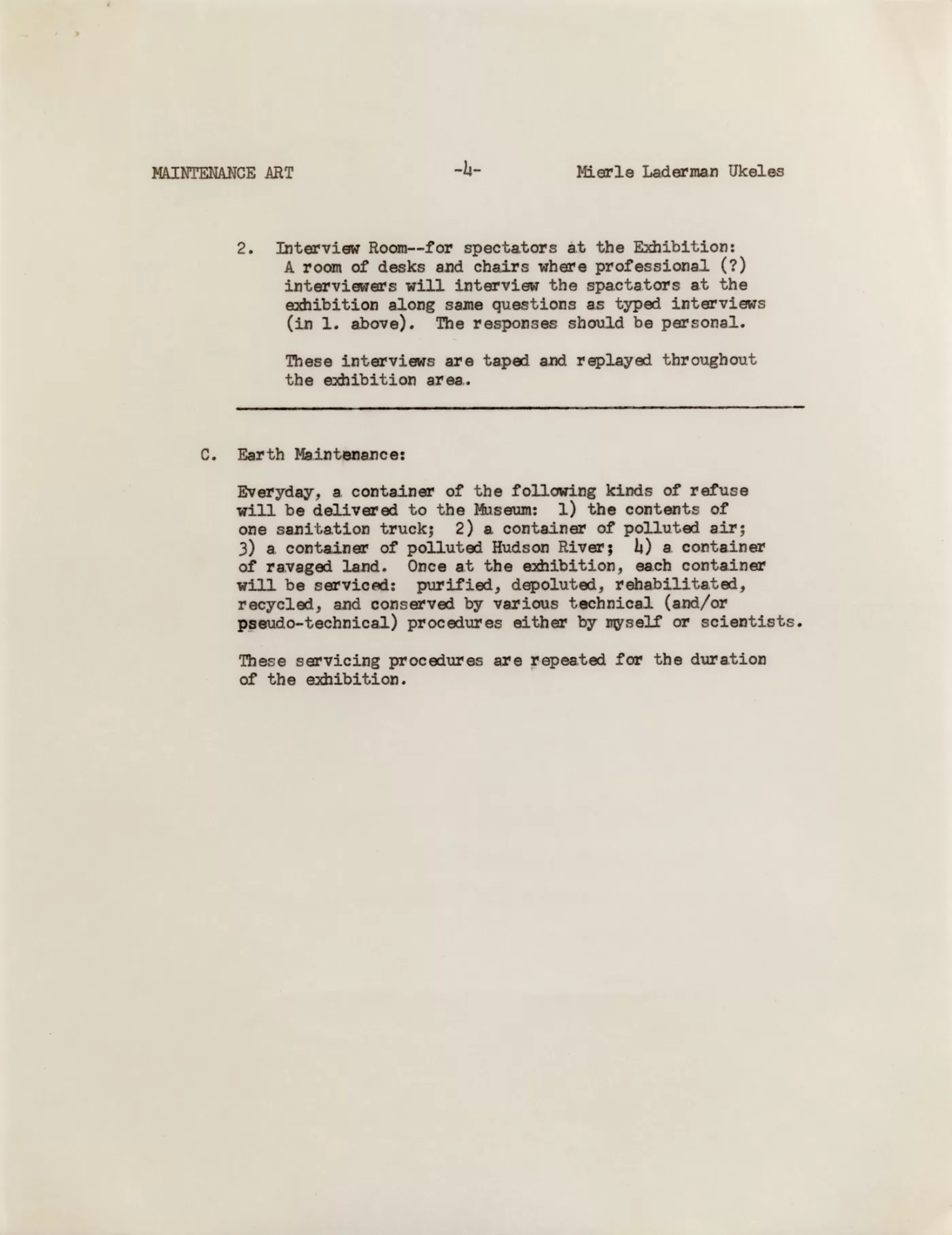Work hard or play hard? The art world can’t decide
11 min read
Eloise Hendy visits Nicole Wermers’ show at The Common Guild in Glasgow and reflects on the blurry meeting point between art and visible and invisible labour
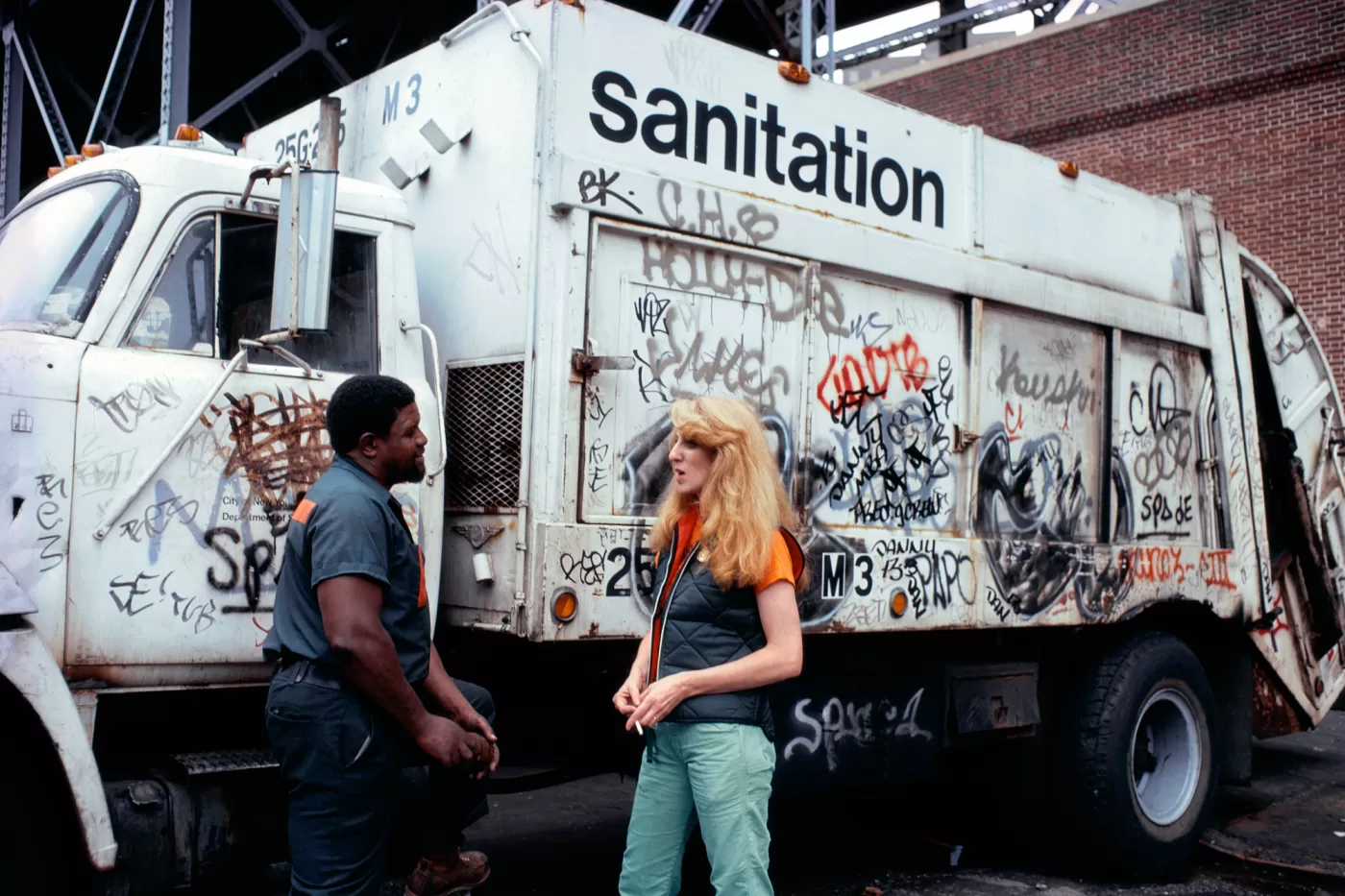
Mierle Laderman Ukeles, Touch Sanitation Performance, 1979-80. Photo: Robin Holland. © Mierle Laderman Ukeles. Courtesy the artist and Ronald Feldman Gallery, New York
I hate cleaning and I love lying down. This is probably true for most people, but I’m certain it’s true for people like me, who have spent a large portion of their lives in the rumbling bowels of the hospitality industry. As a perpetual part-time waitress, I’m intimately familiar with cleaning up after others and staying on my feet. On days off, this familiarity instantly curdles into hatred. At the last place I worked, for instance, I would often do double shifts on Saturdays, and spend the entire subsequent Sunday off in bed – ostensibly ‘doing nothing,’ and yet not exactly at leisure.
I was reminded of this suspended respite state entering Nicole Wermers’ solo show, ‘Day Care’, at The Common Guild in Glasgow. Having moved out of its original premises, the gallery is now housed in temporary lodgings on the seventh floor of an office building. To get there, visitors must walk through an impersonal corporate lobby and take the lift up past floors of unspecified white-collar labour. This journey means that arriving at the exhibition space feels disorienting, even without the sudden burst of bright Scottish sunshine that greeted my visit. As my eyes adjusted, I felt like I was floating, and then as if I had stumbled into a Kubrick set. Floor-to-ceiling windows line the space, which is curved and formed of two grids. Above, there are suspended ceiling tiles common to almost all industrial and commercial buildings. Below, tiles of aluminium gleam and seem to extend the light downwards. Arranged in this optical illusion curve are a series of reclining female nudes, lounging atop maintenance trolleys stuffed with cleaning products, towels, sheets and feather dusters. Here then, white-collar labour, blue-collar labour, creative labour and leisure all collide.
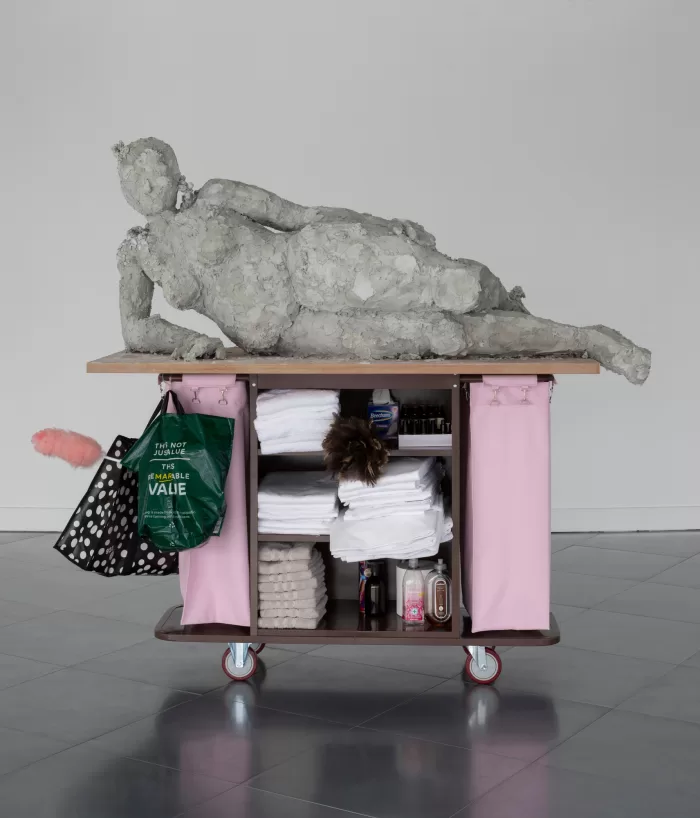
Nicole Wermers, Reclining Female #7 (2024). Courtesy the artist; Herald St, London; Tanya Bonakdar Gallery, New York and Los Angeles; Jessica Silverman, San Francisco; and Produzentengalerie Hamburg. Photo: Ruth Clark.
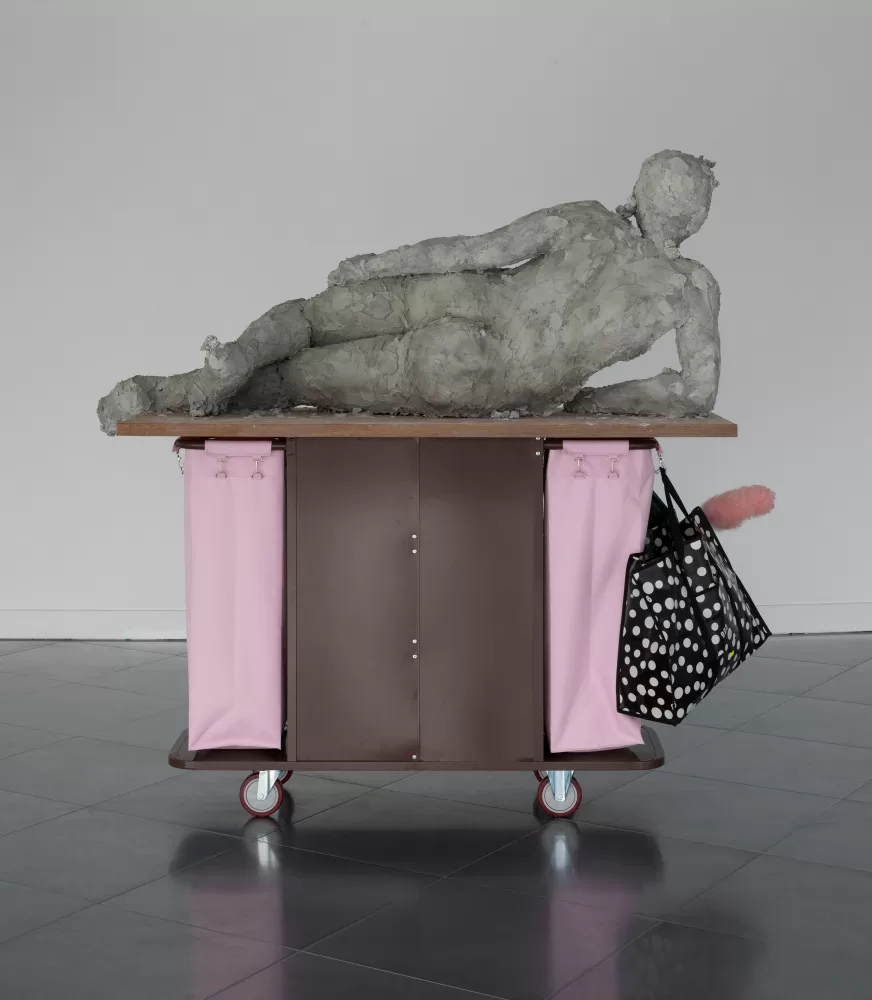
Nicole Wermers, Reclining Female #7 (2024). Courtesy the artist; Herald St, London; Tanya Bonakdar Gallery, New York and Los Angeles; Jessica Silverman, San Francisco; and Produzentengalerie Hamburg. Photo: Ruth Clark.
“The art historical category of the reclining nude is a well-rehearsed trope,” Wermers’ tells me before the opening – one almost entirely dominated by male artists gazing on their female muses. In her sculpture series, Wermers subverts this trope in a couple of crucial ways. First, she portrays reclining nudes from a female perspective, and second, she carves the figures from styrofoam, before urgently coating them with plaster. These materials not only give the sculptures a deliciously sketchy, still-in-progress effect (the Kubrickian corporate exhibition space now taking on the appearance of a workshop floor), they also allow Wermers to lift them up. “Many examples of the reclining female in art are made out of bronze,” Wermers notes, “and are either on low plinths or on the floor.” This is to do with their weight, of course, “but it also gives you the impression that you can mount these women,” In ‘Day Care’, the figures are raised up – the maintenance trolleys become pedestals. Service work literally supports and sustains creative labour. The women look down on the viewer as they rest on their tools.
Up here on the seventh floor, Wermers’ figures also look down on the city. “That’s what I like so much about this space,” Wermers says, looking out of the sprawling windows that reveal Glasgow’s urban centre from a strange vantage point. “It’s all the invisible infrastructure of architecture that you see, right?” She points at a rooftop below. “You have the tracks for window cleaners, you have the vents… All the pipes, all the stuff that you normally don’t get to see.”
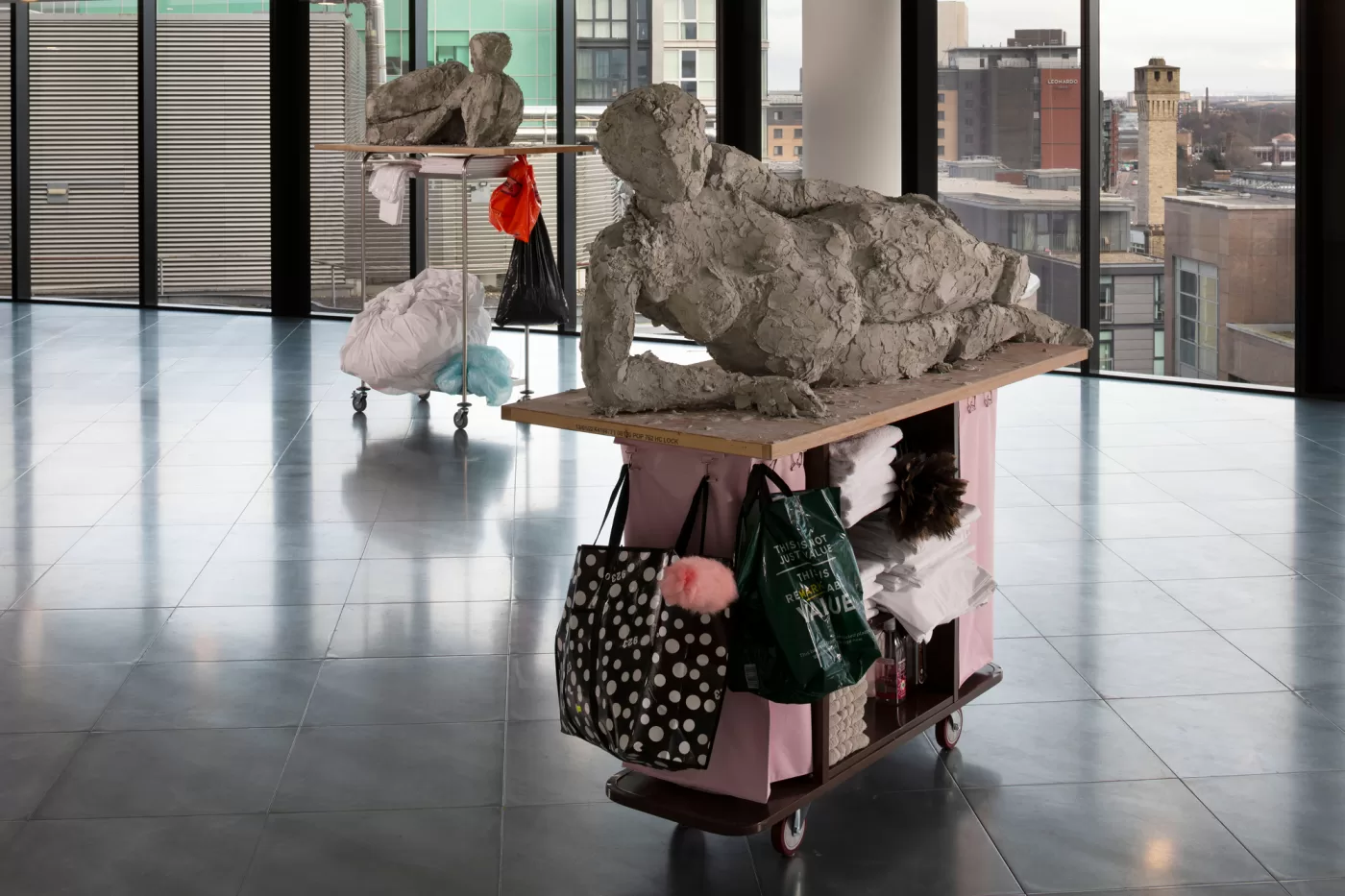
Nicole Wermers, ‘Day Care’ (2024). Installation view, The Common Guild at 60 York Street, Glasgow. Courtesy the artist; Herald St, London; Tanya Bonakdar Gallery, New York and Los Angeles; Jessica Silverman, San Francisco; and Produzentengalerie Hamburg. Photo: Ruth Clark.
Waitressing is a particularly visible kind of service work; cleaning is its shadowy double. The whole point of cleaning is erasure. The worker must render themself invisible – making every surface appear pristine, untouched. These then are the two coin faces of hospitality: the smiling face at the counter, table or front desk, and the one hidden behind the scenes, removing all trace of human impact, including their own.
Wermers used to work in hotels. As I am intimately familiar with long shifts of smiling service, she is familiar with the quick, concealed work of resetting a room in twenty minutes. In ‘Day Care’ then, Wermers disembowels the hospitality industry, turning it inside out and wheeling this invisible, or overlooked labour into view. This is the meaning behind the show’s title, ‘Day Care’ – a neat reversal of the “night work” enacted by maintenance staff in office buildings like the one The Common Guild is temporarily housed in. With her stuffed trolleys, Wermers brings this invisible labour into the daylight. Indeed, at one point she describes the gallery as a “fabulous, super day space, which is a bit like a day spa.”
4 photos
View gallery
1 of 4
There is something else the show’s title makes me think of too though: Mierle Laderman Ukeles, and her Manifesto for Maintenance Art. Anyone familiar with Ukeles will likely know her for her role as the artist in residence at New York City’s Department of Sanitation – Ukeles has held the official, unpaid position since 1977. Yet, she is also known for the three-page manifesto she wrote in 1969, in which she proposed a distinction between “two basic systems: Development and Maintenance.” The former is associated with the avant-garde and concerned with “pure individual creation; the new; change; progress”, and the latter with tasks commonly associated with women and domestic labour. “Maintenance is a drag, it takes all the fucking time,” Ukeles writes. “The mind boggles and chafes at the boredom. The culture confers lousy status on maintenance jobs”.
To counter the privileging of development over maintenance, Ukeles dreamed up an art show. “The exhibition of Maintenance Art, ‘CARE’, would zero in on pure maintenance, exhibit it as contemporary art, and yield, by utter opposition, clarity of issues,” she wrote. Ukeles’ ‘CARE’ would take the form of a tri-part exhibition, including a section where the artist lived in the gallery performing all the daily domestic work she usually did at home. “My working will be the work,” she declared. In another section, dubbed ‘Earth Maintenance’, Ukeles called for a container of refuse to be delivered to the gallery every day, and fully serviced in situ. ‘CARE’ was never staged, but looking around ‘Day Care’ I can’t help but see traces of Ukeles’ schema. Wermers’ sculptures also “zero in on pure maintenance”. At the same time, her mash-ups of service work and creative labour also trouble the boundary between ‘maintenance’ and ‘development’ – presenting the two as uneasily yet inherently conjoined.
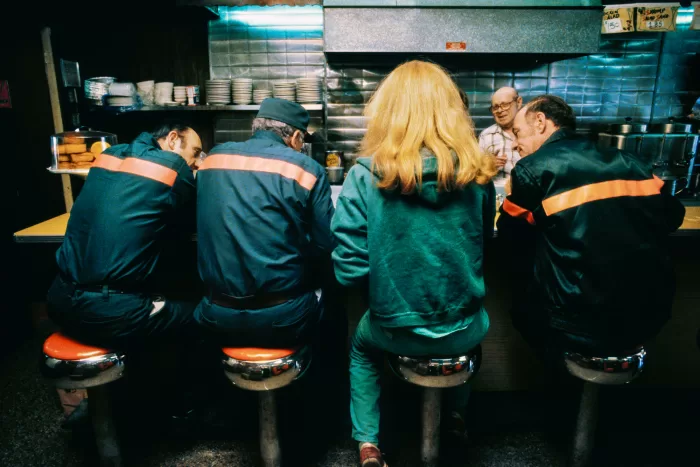
Mierle Laderman Ukeles, Touch Sanitation Performance, 1979-80. Photo: Marcia Bricker. © Mierle Laderman Ukeles Courtesy the artist and Ronald Feldman Gallery, New York
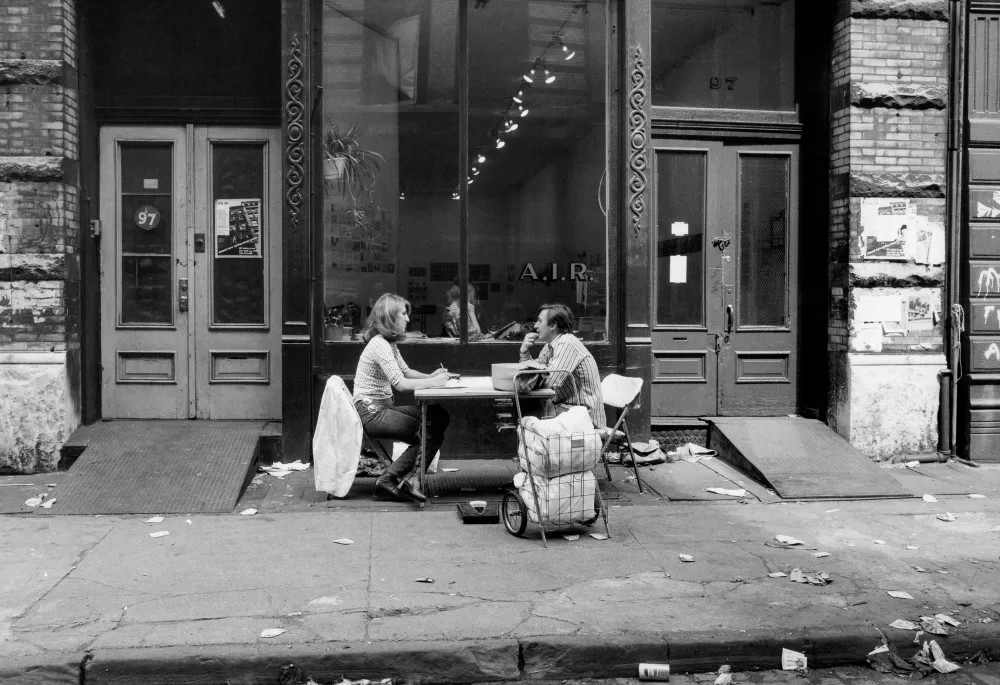
Mierle Laderman Ukeles "Art Interviews" at A.I.R Gallery, Soho, New York. Part of Maintenance Art Activity series, 1973-1974. © Mierle Laderman Ukeles Courtesy the artist and Ronald Feldman Gallery, New York
If Wermers’ ‘Day Care’ is both an office and a day spa, a workshop and a sculpture court, where does the line between labour and leisure lie? “Although reclining as an activity is a non-activity,” Wermers notes that “even the reclining nudes you see in paintings, it was always labour.” Like the housewife or the maintenance worker, the artist’s muse is not passive, she’s on the job. Like the artist, the model’s work also becomes The Work. And, like the artwork, her reclining body is implicated in a system of value.
And yet, there are cheeky breaks in the system. At certain strategic points in The Common Guild, the Carl Andre-esque aluminium tiles have been swapped for trays of sand, littered with cigarette butts. This is a recurring conceit for Wermers, often functioning like a jibe at the Modernist art canon. Here though, there is an added narrative layer, as the butts conjure the image of Wermers subjects on a smoke break: an illicit moment of respite before getting back to work – whether that’s quickly resetting a room, quickly plastering before it sets, or hopping back up on a pedestal to hold still and pose. So, what state are these reclining nudes really in? Leisure or labour? Exaltation or exhaustion? Rest or respite? Perhaps the only certainty is that, like the exhibition space, the state is temporary and precarious.
The day after I get back from Glasgow, I spend three hours cleaning my flat and then immediately come down with the flu. I clean, and then I lie down. Neither activity is wage labour, creative labour or leisure. Both are maintenance. Both are a drag. Yet, tending first to my surroundings and then to my insides, I am also at an impasse before normal service can resume; a brief interlude, functioning like a smoke break.
Nicole Wermers, ‘Day Care’ is on view at The Common Guild in Glasgow until 20th April 2024. thecommonguild.org.uk
